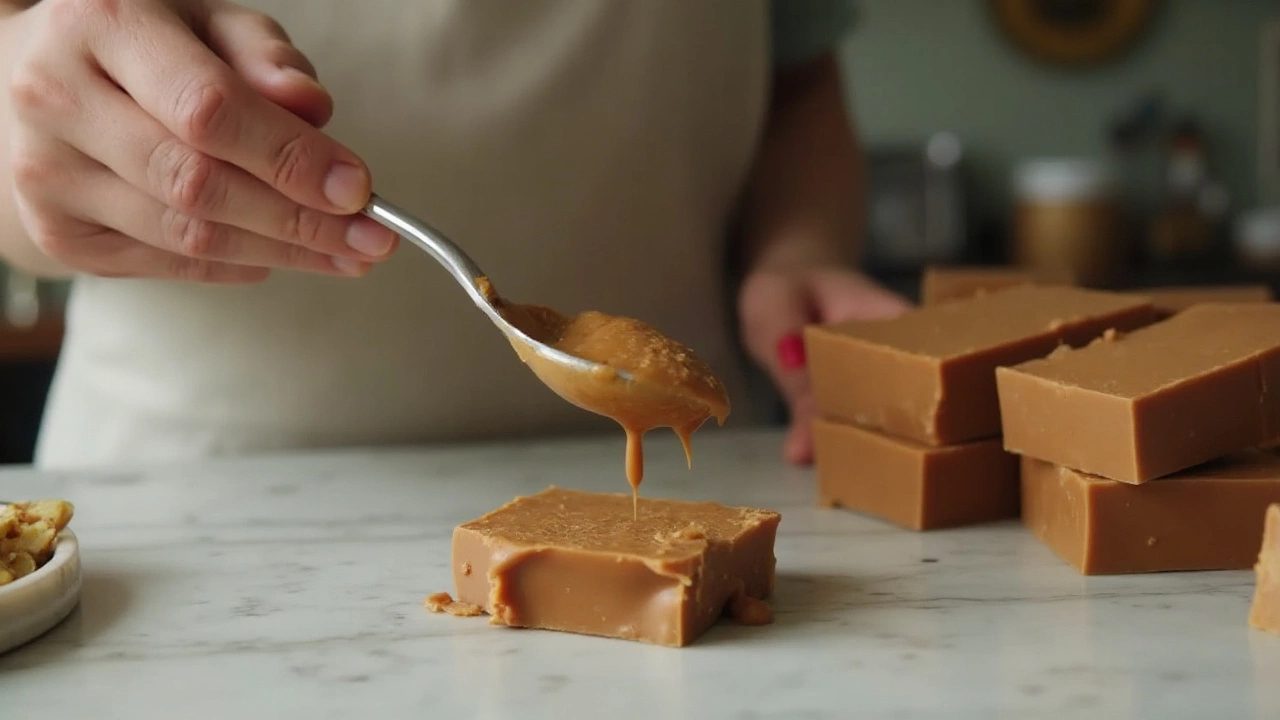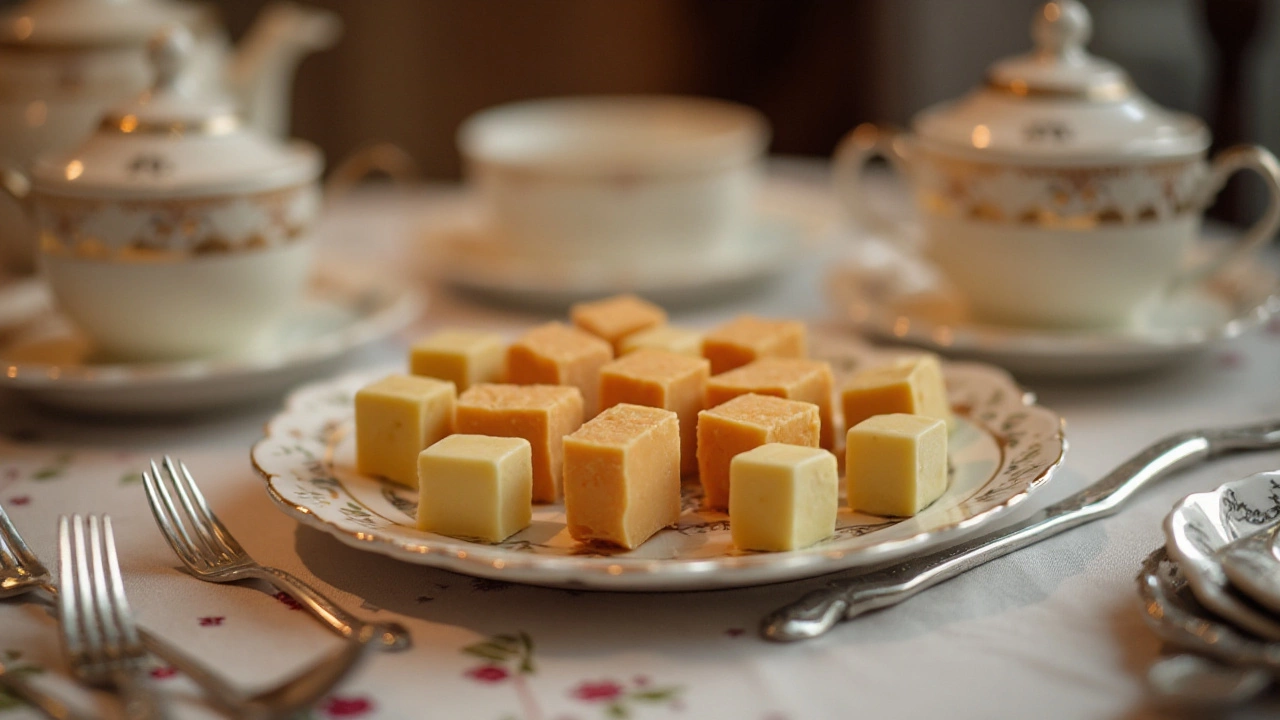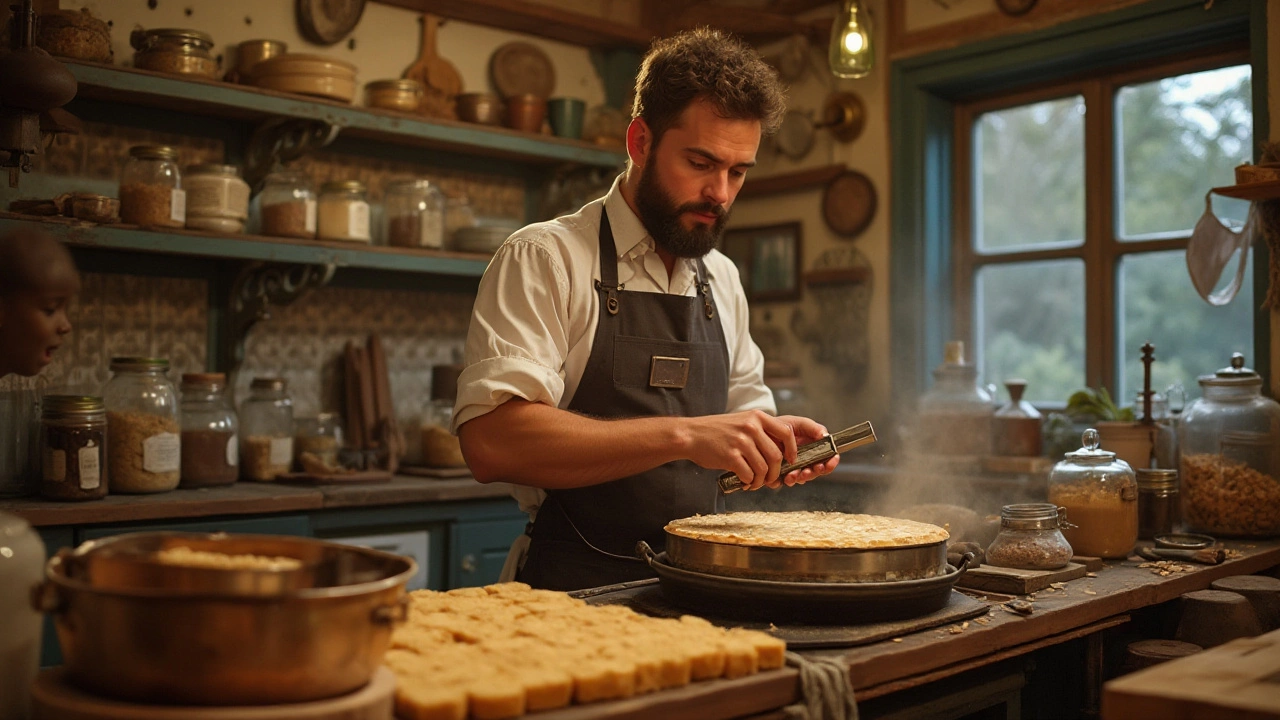
Crafting the perfect fudge is a delightful culinary challenge that rewards you with sweet, creamy indulgence when done right. For those who have ever attempted it, avoiding the gritty, grainy texture that sometimes plagues fudge recipes can seem like a magic trick. But, it's not wizardry—it's science and a sprinkle of know-how.
The journey to flawless fudge begins with understanding sugar and its mysterious crystalline tendencies. When sugar isn't handled correctly, it tends to crystallize too early, leading to that dreaded sandy texture. To alleviate this, a few critical methods come into play, offering solutions that make all the difference.
The right tools and ingredients are vital allies. Quality cocoa, fresh dairy, and reliable equipment ensure that each step leads you closer to creamy delight. Dive deep into the techniques and secrets professional confectioners have used for generations, and learn how to navigate around common pitfalls that can take your fudge from fabulous to frustrating.
- Understanding Sugar Crystallization
- Essential Techniques for Smooth Fudge
- Ingredients and Equipment Selection
- Common Mistakes and Troubleshooting
Understanding Sugar Crystallization
Sugar crystallization is the fundamental process that can make or break your fudge recipes. At its core, this is where sugar molecules align into a structured form, resulting in a grainy texture. When making fudge, the goal is to dissolve sugar completely and control its crystallization to achieve that desired creaminess. Yet, what initially seems like an easy task often turns into an enjoyable challenge involving both precision and art.
To start, it’s crucial to understand the science behind sugar solubility. When sugar is heated in liquid, it dissolves, creating a syrup. If the syrup cools too quickly or is agitated excessively, sugar crystals can reform too early, leading to rough texture instead of the ideal consistency of creamy fudge. The solution lies in managing temperature carefully. Ideal fudge-making temperatures range between 112 to 116 Celsius (or 234 to 240 Fahrenheit), often referred to as the “soft-ball stage.” At this temperature, sugar is fully dissolved and when cooled, will set into a smooth but firm structure.
An interesting fact is the inclusion of ingredients such as butter and cream in the recipe. These act as ‘interfering agents’ by inhibiting the mobility of sugar molecules, thus postponing crystallization. The interaction between fat and sugar prevents large crystals from forming, helping to maintain the smooth texture. Timing is crucial during the cooking phase; removing fudge from heat at the precise moment ensures the non-grainy fudge dream stays alive. Stirring too soon or too vigorously can bring about premature crystallization, so patience truly is key.
Experts emphasize the importance of a gentle and even cooling period, where the mixture is left undisturbed until it reaches about 43 Celsius (or 110 Fahrenheit). This allows sugar molecules to regroup gradually, forming the small, fine crystals that make fudge melt-in-the-mouth delightful. According to baking guru Stella Parks, ‘Understanding how temperature affects sugar is the first step to crafting a truly spectacular fudge.’
Moreover, the incorporation of high-quality ingredients cannot be overstated. Impurities in sugar or low-grade chocolate can alter the chemical balance and unpredictably affect sugar crystallization. Always opt for the freshest dairy products and avoid generic brands when possible, as subtle manufacturing differences can have profound effects. Using a candy thermometer can greatly enhance your success by providing clear guidance on temperature control.
To summarize, mastering the art of sugar crystallization involves understanding your ingredients, practicing precise control over temperature, and ensuring gradual cooling. When these elements converge, you will find your homemade fudge achieving that smooth consistency that delights both the palate and the heart. Next time you venture into the kitchen, armed with this knowledge, you can turn every batch into a fabulous fudge triumph.

Essential Techniques for Smooth Fudge
To achieve the rich, velvety texture that distinguishes quality fudge, perfection in each step of the process is key. It begins with selecting the finest ingredients, as the foundation of any superb dish lies in its raw materials. Choose a pure cane sugar, whole milk or cream brimming with fat, and high-quality cocoa. The purer the ingredients, the less likely gritty textures will emerge. When it comes to sweetness, not all sugars are made equal. Cane sugar crystals dissolve more uniformly than other types, warding off premature crystallization.
The cooking method is where the magic happens. Begin at a low heat, letting the sugar dissolve completely before raising the temperature and allowing it to reach the ideal boiling point of around 234 to 240 degrees Fahrenheit—a sweet spot professionals call the "soft-ball stage." A candy thermometer is indispensable here, ensuring precision as even slight deviations can alter the texture dramatically. Stir continuously yet gently, as excessive agitation encourages crystal formation.
Once your fudge reaches this crucial stage, it's important to remove it from heat and allow it to cool undisturbed until it reaches approximately 110 degrees Fahrenheit. Patience during this cooling phase is critical. At this point, you may stir in optional additions like vanilla or nuts. Stirring must be steady but measured, applying just enough force to integrate ingredients without upsetting the delicate sugar structure you've nurtured.
"Good fudge requires attention to detail as much as any fine art," notes confectionery expert Alice Medrich in her guide to sweets. "Attention and timing are the thin lines between success and re-making."
Another pivotal tip is the use of precise tools. Invest in non-reactive pots made of stainless steel, which distribute heat evenly and help avoid scorching. Opt for wooden or silicone utensils that minimize scratching and prevent heat variance that might bring about unwanted crystal formations. A modern marble slab for cooling can also aid uniformly radiant heat dispersal, especially if you plan to scale up your recipes.
A comprehensive understanding of these essential techniques paves your path to creating sublime creamy fudge. Try out different variations while keeping the foundational principles in mind—sometimes success lies in careful experimentation. If challenges arise—like stubborn graininess—don’t hesitate to tweak your methods or learn from the seasoned confectioners who've walked and perfected similar paths before. Embrace these nuggets of culinary wisdom, and you might just become the talk of the dessert table with your sumptuous confections.

Ingredients and Equipment Selection
The creation of smooth, creamy fudge begins long before you even turn on the stove. It all starts with the careful selection of ingredients and ensuring you have the right tools at hand. Picking the perfect blend of components is crucial to avoid the dreaded graininess. The foundation lies in choosing the right sugar. Granulated sugar is best, but for those seeking an extra touch of smoothness, opt for superfine sugar. This type of sugar dissolves faster, reducing the chance of unwanted crystallization at an early stage.
Next, the use of real butter is non-negotiable. The rich, creamy texture of butter, devoid of water content, is unparalleled. It's advisable to use unsalted butter to have better control over the saltiness of your fudge. When it comes to dairy, heavy cream or evaporated milk will provide that silky texture every fudge lover seeks. These contain just the right amount of fat needed to keep sugar in check. Speaking of fat content, adding a splash of vanilla extract towards the end enhances flavor, offering that deeply satisfying sweetness.
"The quality of your ingredients is directly proportional to the quality of your fudge," says renowned confectioner, Lisa Smith. "Using the best you can afford will always yield superior results."
Moving onto equipment, a heavy-bottomed saucepan is your best friend. The thick base ensures even heat distribution, which is essential in avoiding burning or uneven cooking, often the culprits behind grainy results. A candy thermometer is another essential tool. It accurately reads the temperature of your mixture, which should reach a soft-ball stage if you want the perfect consistency. The thermometer removes all ambiguities from the process and is key to a successful batch.
A sturdy wooden spoon is preferred for stirring, as metal can conduct heat and might scrape the sides, potentially disturbing the delicate sugar crystals. Finally, investing in a silicone spatula is wise for scraping down the sides of your pan to prevent any crystallized sugar from entering the mix. These small but significant choices in ingredients and tools can make the difference between fudge that is smooth and one that is disappointingly grainy, affecting the taste and texture dramatically. Embrace the art of patience and precision in crafting your homemade fudge and witness the transformation of simple components into a luscious treat.

Common Mistakes and Troubleshooting
The art of making creamy fudge can be fraught with challenges, transforming a promising batch of confection into a grainy disaster at alarming speed. Understanding what goes wrong in the kitchen can be just as crucial as following the recipe. A common mistake involves the misunderstanding of temperature control—too high or low a heat can result in poorly set fudge. The key is ensuring precision during the cooking stage, keeping a close eye on the thermometer to align perfectly with the recipe's sugar temperature requirements. When the right sugary state is achieved, and only then, should you move on to cooling.
Another pitfall is impatience. The need for speed can lead to disrupted sugar structures, causing crystallization. Stirring fudge at the wrong time is a classic blunder. It’s crucial to let the mixture cool to the right temperature before stirring commences. This patience ensures the sugars form a smooth, creamy substance rather than a coarse one. Invest in a reliable candy thermometer; it’s not merely a tool but an essential partner in this sweet endeavor. Incorrect ingredients are also culprits in failed fudge attempts. Fresh ingredients are non-negotiable. For example, if your butter or milk isn’t fresh, the resulting fudge may separate or not set properly, resulting in fudge that’s more chewy sauce than luscious treat.
According to confectionery expert Marvin D. Munson, "Fudge is as much a discipline as it is a treat. Its texture and taste rely on precise methods honed through practice and patience."When faced with a disappointing batch, do not lose heart. Each attempt is a learning curve with valuable lessons. Remember that the level of humidity in your kitchen plays a role too. Damp weather can interfere with how your fudge sets as it absorbs moisture from the air, making it sticky or runny. Consider making fudge on drier days or find ways to control humidity indoors for optimal results. If you end up with grainy fudge, consider turning it into another dessert—crumble it over ice cream or cookies as a topping and boldly claim it was the plan all along.